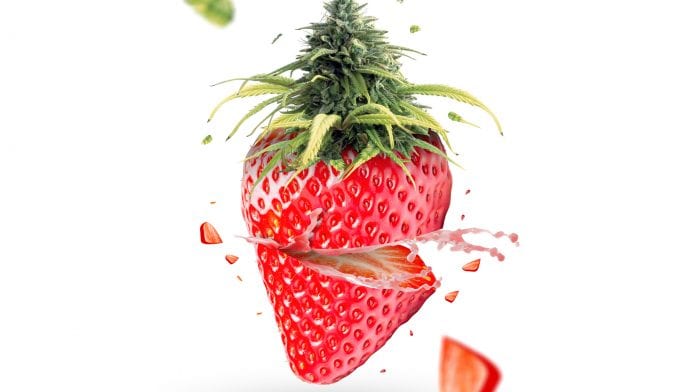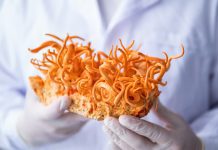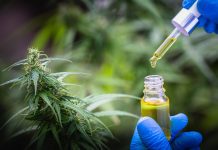
Cannabis cultivators have created thousands of unique strains through complex breeding processes and technical growing methods.
Generally, the growing process of a cannabis plant heavily determines the cannabinoid content within the strain – but what determines the flavour of cannabis?
Cannabinoids, like tetrahydrocannabinol (THC) or cannabidiol (CBD), are a chemical substance within strains that connect to the cannabinoid receptors within the patient’s body and brain, causing a stimulating effect. Different strains can be useful for different illnesses depending on their chemical profile.
Terpenes
The growing process also determines the terpene development of cannabis plants, helping to dictate the flavour and aroma a strain gives off, similar to how an orange radiates its citrusy smell and taste.
The most common terpene found in cannabis plants is myrcene, which is also found within mangoes. Myrcene is responsible for giving a strain’s distinctive smell that most people acknowledge.
Additionally, myrcene is known to provide several therapeutic benefits as well as anti-inflammatory properties. Most importantly, myrcene can also determine whether a strain is indica or sativa-dominant.
Generally, plants that contain more than 0.5% myrcene are said to be indica. The common perception is that sativa offers consumer cerebral-altering head highs, while indica strains provide more of a body-dominant effect. However, it is difficult to consistently classify many strains as either exclusively indica or sativa because of rampant crossbreeding.
For instance, many cultivators tend to crossbreed sativa and indica strains to purposely select specific cannabinoids and terpenes within each strain and create a unique flavour of cannabis. Breeders can mix and match between well over hundreds of different strains, creating an endless array of hybrid options.
Is automation a detriment?
The initial growing process of a cannabis plant is a crucial step because it can determine the resulting potency of the strain, as well as flavour of cannabis. Most large-scale cultivators use machinery to automate their grow houses, which can boost production levels significantly.
However, the major drawback is that machinery can often damage the cannabinoid content within the plants, resulting in weaker strains. Nonetheless, by using automated machinery, many large-scale cultivators are able to mass produce tonnes of cannabis each harvest, allowing them to redistribute the cannabis at wholesale prices.
Small cultivators have engaged in cultivating “craft cannabis,” which is known as the artisanal process of creating organic and premium-grade cannabis. Craft cultivators are able to achieve high-quality products because they avoid using machinery and artificial chemicals.
Artificial chemicals such as pesticides or growth stimulants can damage cannabinoid growth. As a result, craft cultivators tend to each and every individual plant to ensure a healthy growing process. During harvest periods, craft cultivators also hand-trim each plant to maintain the cannabinoid integrity throughout the whole plant.
Ryan Stoa, Associate Professor of Law at Concordia University School of Law, said: “The staggering number of marijuana strains being developed is creating a connoisseur culture that favours small-scale, artisanal farms that can nimbly adapt to shifts in market demand. Because such farms can market themselves as small, sustainable, and local, they can better reflect 21st-century food movement ideals.
“It is probably inevitable that Big Marijuana will take hold in some form, but that doesn’t mean the market can’t support the small businesses that have enabled marijuana to become a uniquely local and artisanal industry.”









